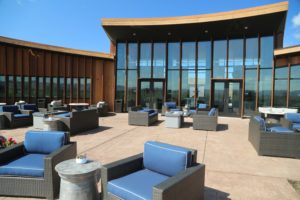
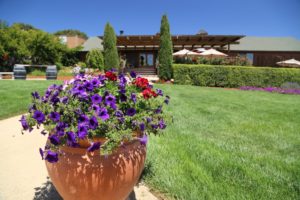
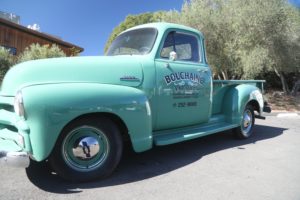 Bouchaine Vineyards (not to be confused with Bouchon Winery in Healdsburg in neighboring Sonoma County) is the oldest continually operating winery in the Carneros District and one of the southernmost wineries in Napa Valley. Vines and fruit trees were first planted in the late 1890s by a man named Boon Fly (a restaurant in his namesake operates at the nearby Carneros Resort and Spa) on the property and the winery has since changed ownership several times including being owned by Beringer at one point when part of the property was used for storage. Incidentally Boon Fly’s son, Camillus Sidney (Buck) Fly was an accomplished photographer who took the only known photographs of Native American leader Geronimo prior to his surrender to the U.S. military in 1886 and was also a witness to the Gunfight at O.K. Corral in 1881 (happened right outside his studio – the C.S. Fly’s Photographic Studio in Tombstone, Arizona).
Bouchaine Vineyards (not to be confused with Bouchon Winery in Healdsburg in neighboring Sonoma County) is the oldest continually operating winery in the Carneros District and one of the southernmost wineries in Napa Valley. Vines and fruit trees were first planted in the late 1890s by a man named Boon Fly (a restaurant in his namesake operates at the nearby Carneros Resort and Spa) on the property and the winery has since changed ownership several times including being owned by Beringer at one point when part of the property was used for storage. Incidentally Boon Fly’s son, Camillus Sidney (Buck) Fly was an accomplished photographer who took the only known photographs of Native American leader Geronimo prior to his surrender to the U.S. military in 1886 and was also a witness to the Gunfight at O.K. Corral in 1881 (happened right outside his studio – the C.S. Fly’s Photographic Studio in Tombstone, Arizona).
Winery construction originally began in 1928 by an Italian vintner named Johnny Garetto which was a rather gutsy move at the time, considering this was still in the midst of Prohibition. Garetto Winery wasn’t actually finished until 1933 which was the last year of Prohibition (this was the first winery to receive a bond in Napa Valley post prohibition). Johnny sold the property to Beringer in 1961.
Today the tasting room and original winery buildings remain, having been significantly remodeled since the original construction. Wood was repurposed from old storage tanks and used on the exterior of the winery. Simply glance at the photos hanging on the side wall next to the tasting counter to see how far this property has come since it’s very rustic look in the 1960s and 1970s. Note the very distinctive brown siding on the buildings – these were hand cut from large old redwood fermentation tanks originally used in the winery. What a creative way to make use of these old tanks.
The winery was sold by Beringer to the current owners, Gerret & Tatiana Copeland and partners and became Chateau Bouchaine Winery in 1980. The partners planted the first vines on site in 1982. Along with the Copeland’s, the original investors included David Pollak (former sales manager for DuPont and the one responsible for creating the investment team) and Austin Kiplinger (a journalist, publisher of the Kiplinger Letter and businessman, now deceased). Rancher Electra Biggs was also once a sizable early investor.
What do you find in their wines? We find a sense of place, the rolling hills of southern Napa, the soaring hawks, the gentle Carneros breezes blowing off the San Pablo Bay, the drifting fog, the solitude of being among a sea of vines and the fine expression of that year’s story. We hear the sound of a private jet departing Napa County airport. We look up. We want to go somewhere. Exotic. And drink #bouchainewines
There are several lines of thought in regard to the name of the winery. Bouchaine commands a couple of meanings in French, loosely translated from bouchon, Bouchaine is French for the name of a person who put corks into wines after they were bottled (a bouchaniere). The last connotation was a bit more rushed! After the purchase of the winery in 1981, Gerret & Tatiana took a trip out of town and their lawyer needed to come up with a name quickly and was looking for something French, so he chose his wife’s maiden name of Bouchaine. Prominent winemaker Jerry Luper was at one point also a limited partner and used to make wine here for several other clients. The Copelands eventually bought out their partners.
Gerret is originally from Wilmington Delaware; his parents were quite accomplished – his father Lammot du Pont Copeland was the 11th president of DuPont Company and also founded the Wilmington DE chapter of the Confrérie des Chevaliers du Tastevin (an association of Burgundy wine connoisseurs with a number of international chapters). His mother Pamela Copeland was a well-known horticulturist. Gerret is directly related to DuPont’s founder, Eleuthère Irénée du Pont. He spent his career in finance. Tatiana’s family heritage is Russian; her great uncle was the famous composer Sergei Rachmanioff. She was born in Germany, lived in Denmark for a short while but spent much of her childhood living in Argentina before moving to the USA and earning degrees from UCLA and the University of California Berkeley.
Both Gerret and Tatiana are very active in the arts and music scene both in the Napa Valley and in Delaware (including the Delaware Art Museum in Wilmington which was founded by Gerret’s grandmother); they are also strong supporters of Festival Napa Valley. And over the years both have given generously to a variety of other causes focused primarily on Wilmington based locations including healthcare, the arts, the environment, animal welfare and education.
Wilmington Delaware Connections
The Delaware Art Museum features a number of galleries – spanning two floors. Permanent collections and displays include British Pre-Raphaelite art and works by Wilmington-native Howard Pyle. Rotating exhibits features numerous artists and styles of art. Plenty of parking is located on site – a short walk from the museum entrance. Visitors will pass by the Copeland Sculpture Garden (named in honor of Gerret’s parents, Pamela and Lammot duPont Copeland) containing a number of unique outdoor works of art including the prominent bronze Crying Giant by artist Tom Otterness. The sculpture garden also features a labyrinth, built with 7 tons of Delaware River Rock.
The Grand Opera House is located in downtown Wilmington; this stately old building was constructed in 1871. The centerpiece of the opera house is the 1200+ seat Copeland Hall with a smaller theatre also housed called the ‘baby grand’. The opera house has hosted famous performers over the years including actress Ethel Barrymore and composer John Philip Sousa. For nearly 40 years the opera house functioned as a movie theatre. Today it is used for primarily hosting classical musical concerts as well as ballet performances. And with 5 other rooms/spaces the Grand Opera House also hosts a variety of private events throughout the year.
This grand old dame was listed on the National Register of Historic Places in 1972.
Kalmar Nyckel Foundation offers the public access to “the tall ship of Delaware”, the Kalmar Nyckel sailing ship – usually berthed right in front of the Tatiana & Gerret Copeland Maritime Center at the Kalmar Nyckel Shipyard (Kalmar Sweden is a sister city to Wilmington). The ship is a recreation of a 17th century tall Dutch ship – it sails between May and October and during the winter months is open on the weekends for ship tours. The Copeland Maritime Center contains model ship exhibits as well as information about Wilmington’s ship building history.
Mt Cuba Center is the former home of Pamela and Lammot duPont Copeland and is where Garret was raised – his childhood home. The estate is located about a 20-minute drive from downtown Wilmington. The original family home now houses offices, the Copeland Room (featuring numerous paintings of Copeland family members) and a small atrium like room where visitors can enjoy light food items for sale. The roots for this impressive botanical garden began in the 1960s when the Copelands began converting parts of the property to natural gardens.
During opening hours, visitor can check in at the main house, pay the admission and then walk on a number of paths which meander through the foliage. The focus of the gardens is on plants occurring naturally in the eastern United States. Fall is a pretty time to visit – with plenty of trees showing bright red- and yellow-colored leaves. A golf cart will take visitors to select areas within the gardens including the picturesque ponds. Umbrellas are also provided for visitors to use during rainy weather.
The Tatiana and Gerret Copeland Animal Care Center is a modern no kill animal care and adoption center. Located in the Wilmington Riverfront area. Pulling into their parking lot, one is immediately greeted with the sounds of barking dogs. Operated by the Delaware Humane Association (founded in 1957) their focus is on providing homes for otherwise homeless animals (providing a home for dogs and cats until the animals can be adopted). They also provide a number of related services including spay and neuter surgery, vaccination, a well-stocked pet food pantry.
—
Total acreage on the Bouchaine estate is about 104 acres of which approximately 87 acres are planted mostly to Pinot Noir and Chardonnay with the remainer to Pinot Meunier, Pinot Gris, Gewurztraminer, Riesling and Syrah. Bouchaine received the first Fish-Friendly farming certification in Napa Valley from the California Land Stewardship Institute, a local a non-profit organization. Cover crops are used within their vineyard to add organic matter to the soils and prevent erosion; these crops are diverse and include clover, oats, barley, peas and vetch and rye. Compost, chicken manure and fish emulsion are also added to their vineyards for additional nutrients. And in 2021 Bouchaine introduced Cisco Industrial Asset Vision sensors in their vineyards to measure temperature, light, humidity, wind and soil moisture. Date from this collection allows the viticulture team to make more precise and informed decisions throughout the growing season.
Bouchaine sources some of their grapes from the Sonoma Coast and the more northerly Anderson Valley. Their estate is among the southernmost vineyards in the Carneros, putting them very close to the moderating effects of the San Pablo Bay. In addition, they are among the highest vineyards in lower Carneros – in a region that for the most part is fairly close to sea level.
Need a break from the up valley big bold Cabernet Sauvignon wines? Being a Carneros based winery, two of their most produced wines are Pinot Noir and Chardonnay and they do an excellent job on both of these varieties. As Bouchaine says, “Cabernet Sauvignon is the king of wines, but Pinot Noir is the wine of kings.” Bouchaine produces two estate Chardonnays in different styles; this gives guests a feel for how the wine making style can affect flavor and aroma – one wine experiences no oak during fermentation and malolactic fermentation is inhibited while the other wine is aged in oak and undergoes partial malolactic fermentation.
Former Bouchaine winemaker Michael Richmond had over 30 years’ experience producing high quality Pinot Noir & Chardonnay. He was also the co-founder of what was Acacia Winery (now Calmére Estate Winery).
Select Wines
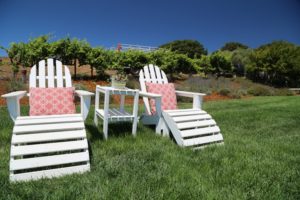
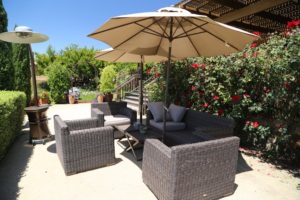
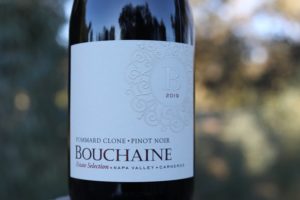 Whites/Rosé
Whites/Rosé
The 2021 Bouchaine Estate Pinot Gris, Napa Valley Carneros is pale gold in color; the bouquet is on the more restrained side of the spectrum in terms of ripeness. Its aromatics are fresh with citrus overtones including grapefruit, a lemon zest, citrus blossom, guava and herbal/greener influences of freshly mowed grass, lemongrass, kaffir lime leaf and a subtle note of fennel. Bright, fresh, juicy, slightly aqueous and lively across the palate, this wine is intensely flavored and tastes like kumquat, green apples, green guava, grapefruit pith pomelo, not fully ripe pear and a hint of dill. Its rounded mouth feel is complemented by a bright, ‘wake me up’ acidity. Pair with fresh oysters please. This wine was primarily fermented in a stainless steel tank and then was aged in 30% neutral oak and 70% stainless steel vessels for 7 months prior to bottling.
The 2019 Bouchaine Hyde Vineyard Chardonnay, Carneros is grown by one of their acclaimed vineyard neighbors; this wine is deep gold in color; the bouquet offers notes of warm butter (but it’s not buttery), pineapple, peaches in light syrup, caramel, crème Brule, coconut and honeycomb. The aromatics smell like dessert. Its texture is soft and supple across the palate offering flavors of melon, honeycomb, pineapple, popcorn butter and various stone fruits including yellow peach and apricot. This wine lingers with a noticeable and persistent richness of flavor along with hazelnut and some baking spices. Drinks very nicely by itself. This bottling was not put through full malolactic fermentation.
The 2017 Bouchaine Las Brisas Vineyard Riesling is from a 1-acre block within this vineyard. There is not much Riesling planted in Napa Valley or on the Napa side of Carneros and presumably not much from the Sonoma side of Carneros either (where this fruit was sourced from). Pale dried straw color in the glass offers ripe aromatics of golden delicious apple, pineapple, honeysuckle, honey and an orange peel zest. Also, citrus blossom. Rounded but not creamy across the palate, this wine offers flavors of green apple, kiwi, a minerality nuance and lingers with lively acidity on the finish. The fermentation was stopped leaving the wine with a hint of residual sugar, but we were unable to pick up on any sweetness in this particular bottling.
Bouchaine also produces Pinot Meunier, a white grape that is a cousin of Pinot Noir. We’ve come across this variety maybe 3 or 4 times in Napa as it is not commonly produced as a still wine as more often it is used in sparkling wine production.
Pinot Noir
The 2022 Bouchaine Pinot Noir, Dijon Clone Carneros, Napa Valley was fermented in open top tanks using indigenous yeast. This wine is pale ruby in color; the bouquet offers plenty of berry driven fruits including raspberry, strawberry, red cherry, red licorice, currant and red plums. And there are additional layers at play here, perhaps of white pepper, rose hips and a floral note, similar to lavender. On the palate there are flavors of dark raspberry, currant, cherry, ground white pepper, dried sage, dried mushrooms and a dried tobacco leaf spice. Layered. Dark. Savory. Spicy. Medium acidity. The tannins persist with a light gravelly and grainy character which we felt more on the front of the palate than the back. At a party, this wine would be the one on the fringes of the crowd, worldly wise and hanging out waiting for someone to engage in an intellectual conversation. We would love to pair this roasted lamb rib chops, bone in, covered in an assortment of herbs including rosemary.
The 2019 Bouchaine Pommard Clone, Pinot Noir Estate Selection is pale ruby in color; the bouquet offers an herbal note (rose stems), white pepper, red cherries and a dark savory spice nuance along with a light touch of sweet vanilla, deeper into the aromatics. This savoriness starts to dissipate somewhat as the wine evolves in the glass, revealing more of its core fruit characteristics. This wine shows a nice cadence across the palate between flavor, acidity and texture. Offers flavors of red cherry, red licorice, and cranberry. The tannins are soft and supple and slide across the palate as nicely as skiing downhill on freshly fallen powder at Mammoth Ski Resort in California. It lingers with a light toasty and nutty note along with an accompanying freshness but not tartness of acidity. This wine is 14.6% alcohol. We’ve been enjoying Napa based Zuzu catering services at select events around the valley this year; this wine would pair very well with one of their sausage and seafood wood-fired paellas.
The 2012 Bouchaine Vineyards Pinot Noir offers a classic Pinot Noir bouquet including on both the bouquet and the palate with many similarities to other Pinot Noir wines from this part of Napa Valley. The bouquet shows hints of cocoa powder and raspberry. The core of the palate is red fruited including currant and cranberry with some lighter spice notes including of white pepper. This is a lighter expression of the variety, supported by bright fruit and lively acidity. We have tried several vintages of this particular variety from Bouchaine and each bottling, regardless of vintage, is consistently an elegant wine.
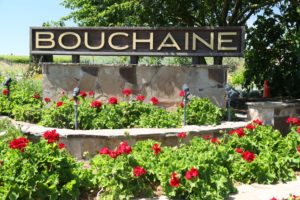
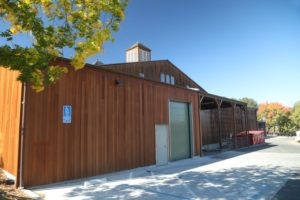
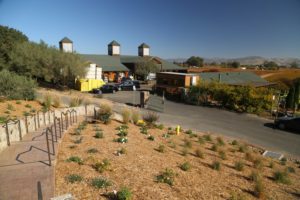 The 2012 Bouchaine Vineyards Terraces Pinot Noir was harvested from the top of the two highest hills on the property. It is dark for a Pinot Noir. The nose shows an earthiness along with a mushroom nuance. As the wine breathes both of these characteristics dissipate somewhat to the background revealing red fruit aromas. The palate is superbly balanced showing a sweetness of fruit initially. This wine has decent structure with fairly fine-grained tannins that last for some time on the finish.
The 2012 Bouchaine Vineyards Terraces Pinot Noir was harvested from the top of the two highest hills on the property. It is dark for a Pinot Noir. The nose shows an earthiness along with a mushroom nuance. As the wine breathes both of these characteristics dissipate somewhat to the background revealing red fruit aromas. The palate is superbly balanced showing a sweetness of fruit initially. This wine has decent structure with fairly fine-grained tannins that last for some time on the finish.
Dessert
Dessert wine enthusiasts take note – Bouchaine produces a very pretty Bource d’Or (translates to Taste of Gold) from Chardonnay grapes. The Bouchaine Vineyards 2007 Bource d’Or is amber in color and strikes a nice balance between flavors of honey and brown sugar. With a residual sugar of 19%, this wine is very sweet, but it is not so high in alcohol – only 11%. It is always refreshing to find a dessert wine with lower alcohol. Stone fruit and minerality nuances are found in the bouquet, with flavors of peach, and honey notes on the palate, however the finish isn’t gripping due to extreme sweetness like some cloyingly sweet dessert wines, rather it is smooth and quite well balanced. This wine is only made during select years.
Non-Alcoholic
The 2023 Bouchaine Non-Alcoholic Rosé of Pinot Noir is Bouchaine’s first ever alcohol free wine. The alcohol was removed through vacuum distillation. It is deep salmon in color; red-fruited, the most prominent aromas is that of some sort of hard strawberry candy or maybe even closer to a strawberry fruit roll-up. But other layers include dried orange peel, rose petal, cranberry, a steely minerality and a light herbal but not green character, perhaps most resembling that an herbal/berry fruit tea. In fact smelling this bouquet brought us a memory – the smell of of drinking tea in the cozy Cranberry Cottage Tea Room in Auburn, Indiana. The bouquet is more appealing than the palate. We tasted this two years post vintage; the palate feels ‘older’ like it has lost most of its life; its muted flavors include cranberry, pomegranate, raspberry, watermelon and strawberry. For lack of a better adjective, this wine tastes a bit grapey. Lightly tart with a citrus like acidity, its flavors include ruby grapefruit and rhubarb. The mouth feel is supple and silky; the flavor finishes very quickly with the acidity persisting a bit longer. This wine begs to have some residual sugar.
Kudos to Bouchaine for pushing the early Napa Valley envelope on producing a non alcoholic wine.
—
Think of the two C’s when discussing the best places for bike riding in Napa: Calistoga to the extreme north in the valley and Carneros to the south. Bouchaine is one of the most bike friendly wineries in Napa; often bikers will stop by on their own or with one of the many local bike tour companies. Bouchaine is certainly available for bike groups as there is a large lawn and tent setup (when weather permits) behind the tasting room as well as deck seating. Most Napa wineries who have built “long games” into their grounds build Bocce Ball courts – not so with Bouchaine. Rather, look for the fun horseshoe pit in the back!
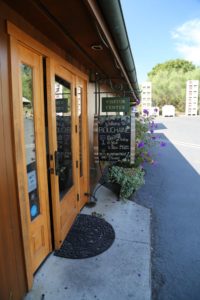
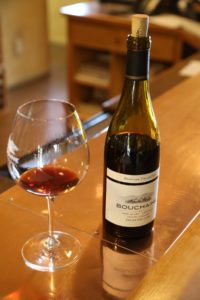 The tasting room staff is very friendly and helpful. In 2008 the tasting room was totally remodeled and now shows wonderfully. In the mood for hiking? Bouchaine maintains a unique 7/10ths of a mile, self-guided vineyard walk, highlighted by 14 different stops. Not a bad way to work up a thirst by any means and plus, it is an educational tour as well.
The tasting room staff is very friendly and helpful. In 2008 the tasting room was totally remodeled and now shows wonderfully. In the mood for hiking? Bouchaine maintains a unique 7/10ths of a mile, self-guided vineyard walk, highlighted by 14 different stops. Not a bad way to work up a thirst by any means and plus, it is an educational tour as well.
Be sure to pick up the “vineyard walk” brochure from their tasting room before you start. Several stops on the tour afford one very good views of the Carneros district, the Napa River and the San Pablo Bay. And Bouchaine offers special and unique events at certain times of the year including Star Gazing in the Vineyard and Falconry experiences. Several falcons (with GPS monitoring) are released daily in the vineyards by local falconers – these birds of prey help limit the rodent and other bird population on site.
In the summer 2017 construction began on what is now a 5,000 square foot hospitality center and tasting room experience. The center features a commercial kitchen, a lounge and tastings (including food and wine pairings) and is available only by appointment with visits initially reserved for wine club members. The building was completed by October 2019.
From the outdoor patio one has excellent views overlooking lower Carneros and the San Pablo Bay. The inside features a tasting bar (made from reclaimed wood) and a lounge area next to the extremely impressive open-air commercial kitchen (containing the ‘king’ of range ovens) as well as paintings primarily from local artists. This hospitality center was built by Wright Construction, a prominent firm that has built or worked on a number of Napa Valley based wineries including Cakebread Cellars.
Bouchaine offers either a garden tasting (next to their original hospitality center) on the lower part of their property or a terrace tasting at their new hospitality space on the upper part of their property. Note that there are different parking areas for each of these tasting locations.
Olive Hill
Bouchaine would often carry bottles in their tasting room of olive oil from Carneros based Talcott Olive Oil located about a mile from Bouchaine. Talcott Olive Oil was founded by Dr. James Talcott who was formerly married to Nena Talcott (died 2024) who was a partner in Grove 45 Olive Oil Company. As of 2019 James listed his 43-acre property for sale and by mid 2020 had sold it to Bouchaine Vineyards. The property, referred to as Olive Hill, is planted to 20 acres of 3,000 organically farmed olive oil trees. For a short while after the sale, the olive oil was rebranded to, Tsarina but moving forward will be bottled under Bouchaine.
Bouchaine uses this property for select private events including fundraisers; the views from the outside of the house looking north are spectacular of the rolling hills/Carneros countryside.
And for probably the most bizarre and fascinating rescue story in the history of Napa Valley; see our review on Steltzner Winery for Dr. Talcott and another doctor’s involvement in the rescue of vintner Dick Steltzner following a plane crash near Nichelini Winery in 1976.
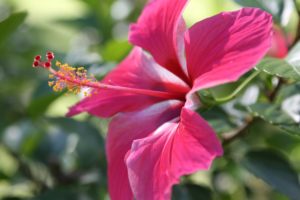
 The Copelands also own the prestigious Toucan Hill on the private island of Mustique in St. Vincent and the Grenadines in the Caribbean. This beautiful and memorable private Moroccan style mansion is located on the highest point of the island and was in part designed by Tatiana. It can be rented on a weekly basis.
The Copelands also own the prestigious Toucan Hill on the private island of Mustique in St. Vincent and the Grenadines in the Caribbean. This beautiful and memorable private Moroccan style mansion is located on the highest point of the island and was in part designed by Tatiana. It can be rented on a weekly basis.
Total production varies – during multiple visits we have been told between 7,000 and 10,000 cases a year, but we have also seen numbers published by reputable sources online indicating a case production up to 20,000 cases a year. A number of their limited production wines are only available at the winery and through their wine club.
Their wines have been served at a variety of state functions over the years. One of their early Pinot Noir wines was served in the White House under the Reagan administration. And more recently select Bouchaine wines were served at a private function in honor of Queen Elizabeth’s 70th Anniversary and Platinum Jubilee in England.
For more information and or to join one of their wine clubs (12 or 18 bottles shipped per year), visit: www.bouchaine.com
ORIGINAL VISITOR CENTER
Exterior
Interior
Vineyards
Winery
Birds of Prey
Visitor’s Center/Club Members Lounge
Exterior
Interior
Pollak Vineyards, Virginia
While not associated with Bouchaine Vineyards, Pollak Vineyards was founded by original Bouchaine investors David and his wife Margo Pollak in 2003. Even before his association with Bouchaine Vineyards, David had invested in vineyard land in the Russian River Valley of Sonoma County. Pollak Vineyards is located in rural Virginia about 90 minutes west of Richmond or about 15 miles west of Charlottesville. The property is 98 acres of which 34 acres are planted to vines (9 varieties). The first grapes were planted on site in 2003. Pollak Vineyards grows and produces all of their own wines.
Visits to the property are fun with tastings either hosted indoors, outside on their wrap around porch or on the grassy area next to one of their vineyard blocks. Visitors often bring blankets with a picnic and spread out on the lawn. More intimate spaces are located down the hill next to their small pond (several picnic tables are here). Tastings are offered as flights, a white only or a red only. A couple of standouts from a recent visit included their Merlot and the ‘big boy’ a masculine styled Petit Verdot. And select bites can be ordered and paired with the wines including cheese and charcuteries and some other products made by local artisans.
The first vintage of Pollak Vineyards was in 2005. Total production each year is around 5,000 cases – in walking through some of their vineyard blocks we noticed what looks like very iron rich red soils (the colors reminded us of Pritchard Hill soils, but without one significant feature, the rocks!).

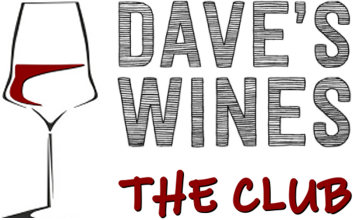




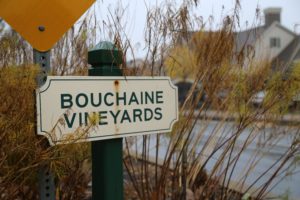
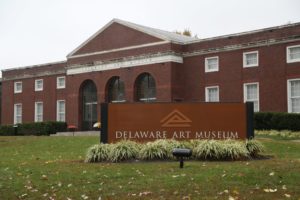
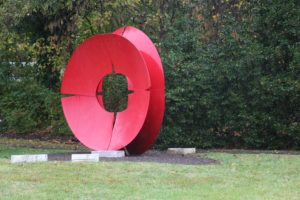
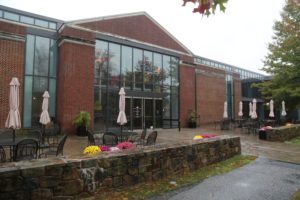
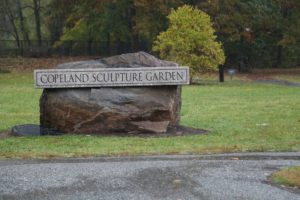
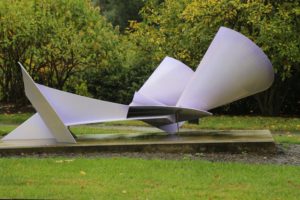
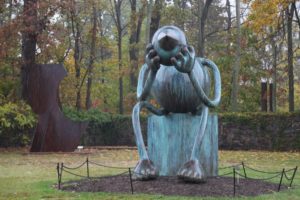
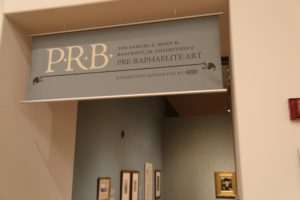
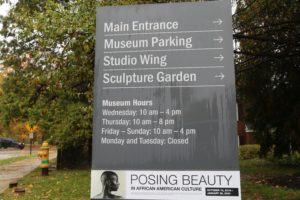
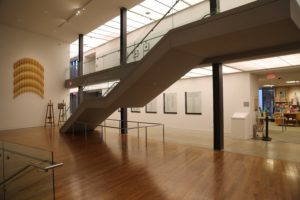



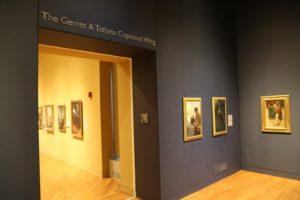


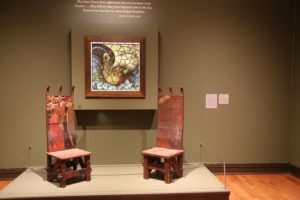

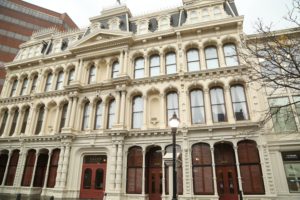

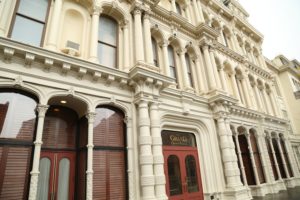
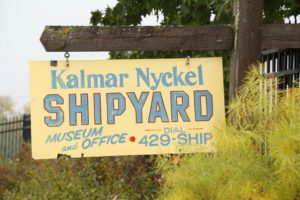
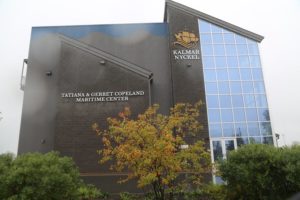

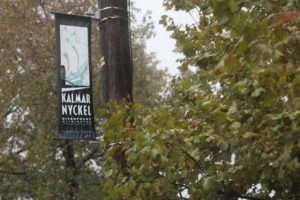
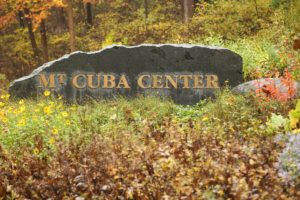
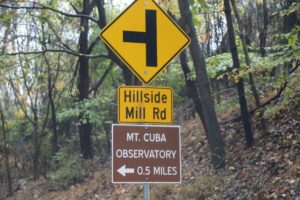
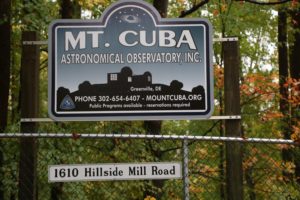
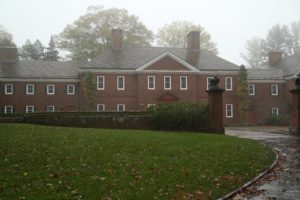
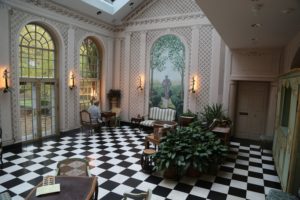
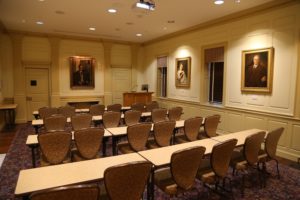
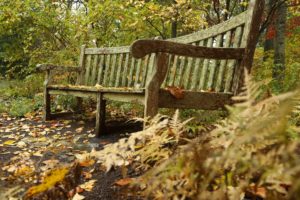
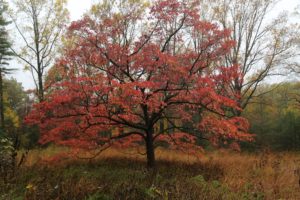
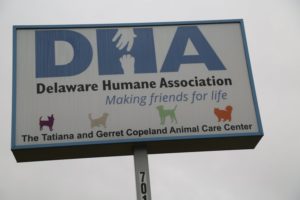
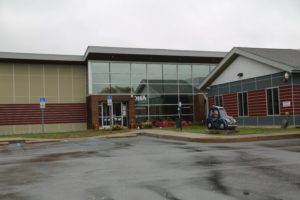
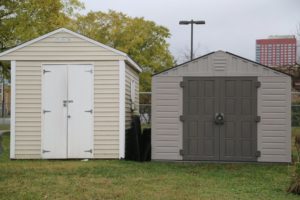
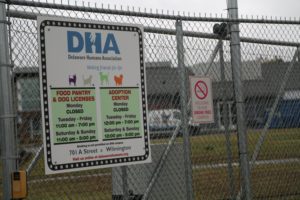
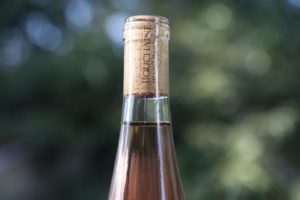
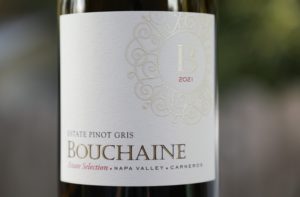
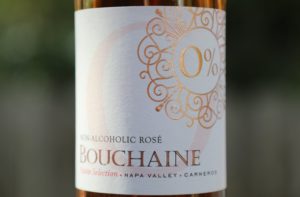
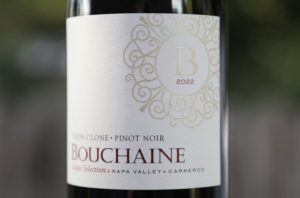
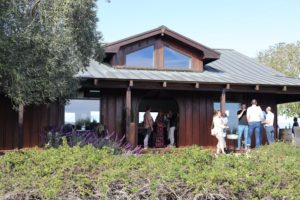
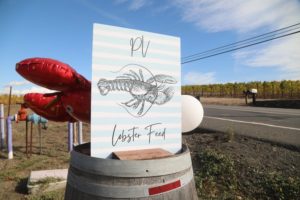
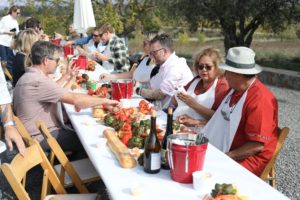
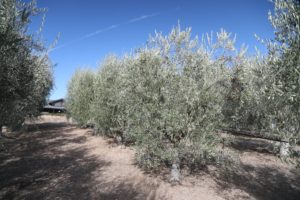
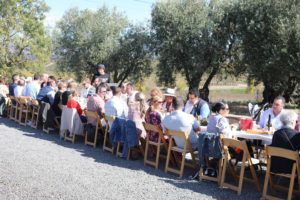
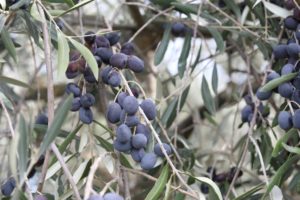
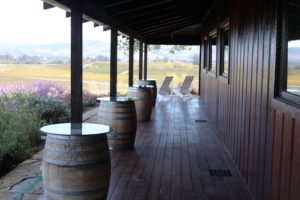
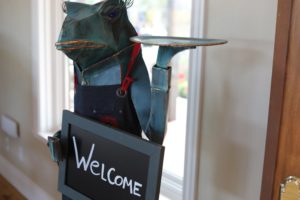

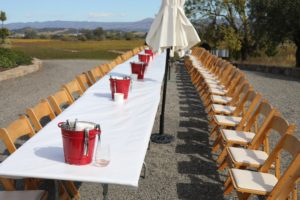
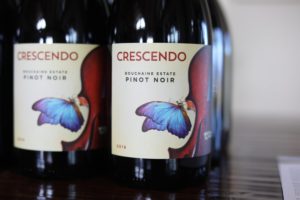
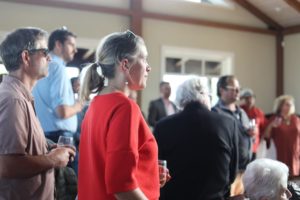
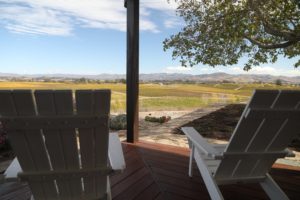
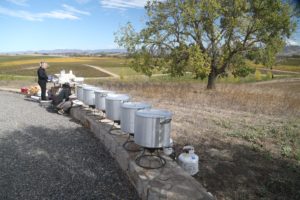
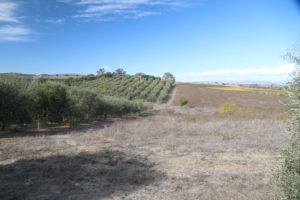
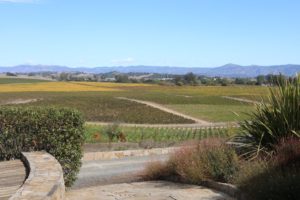
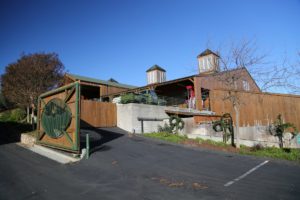
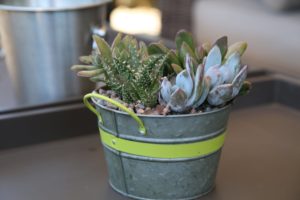
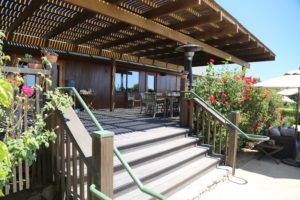
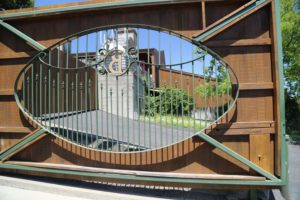
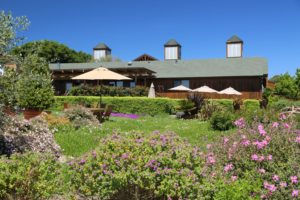
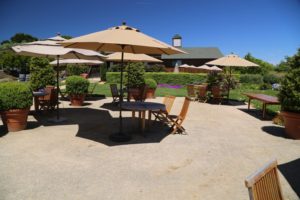
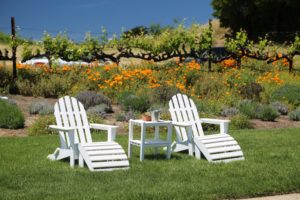
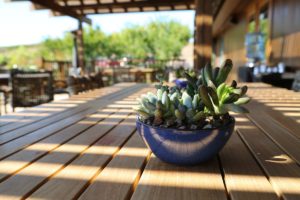
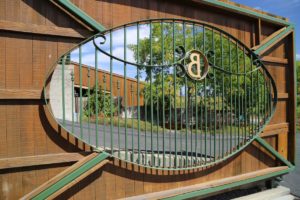
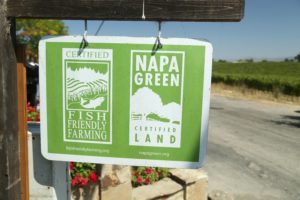
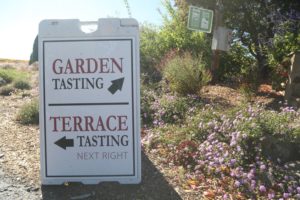
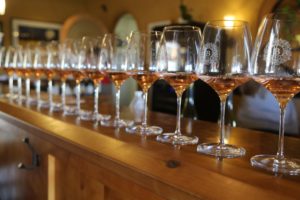
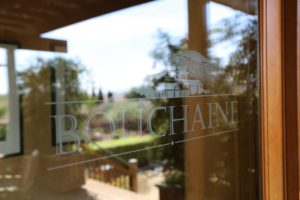
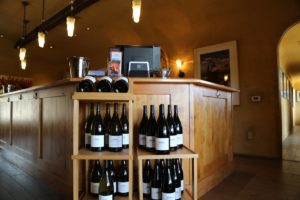
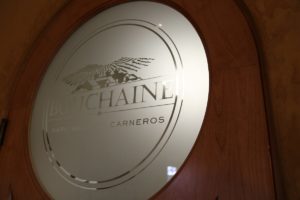
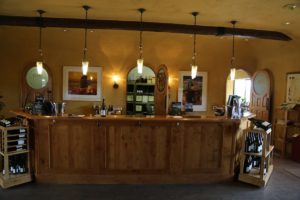
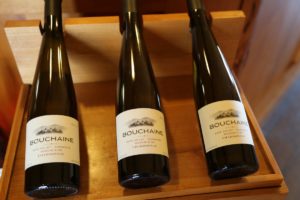
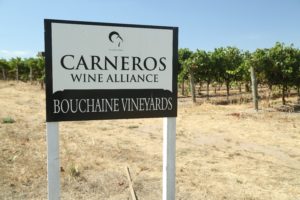
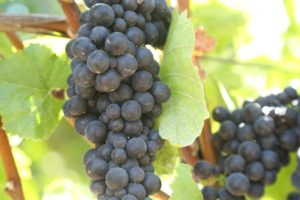
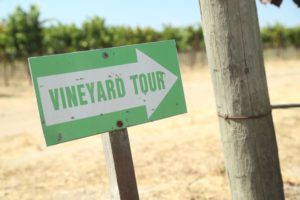
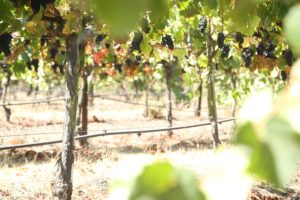
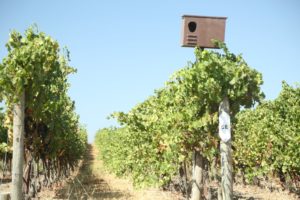
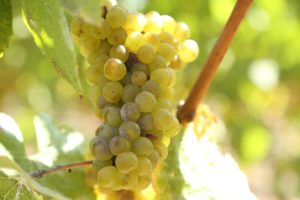
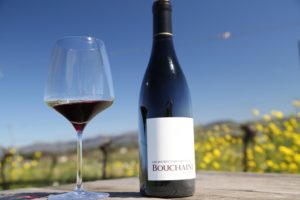
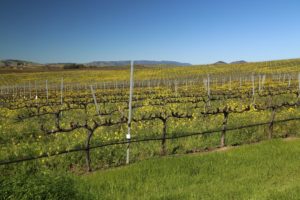
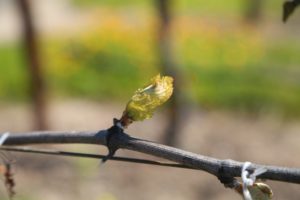
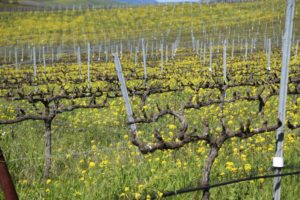
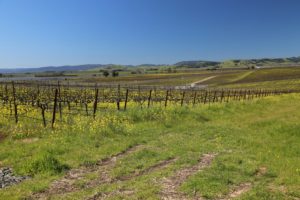
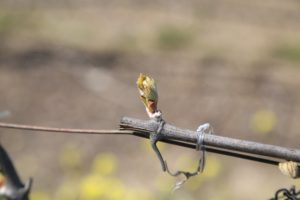
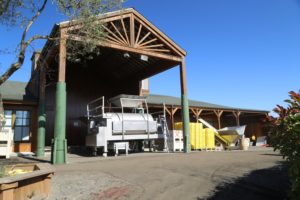
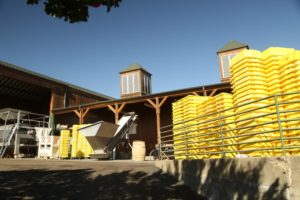
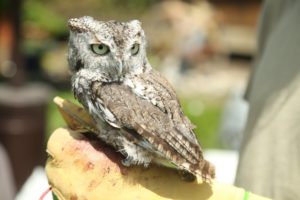
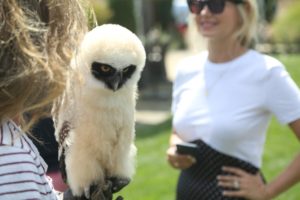
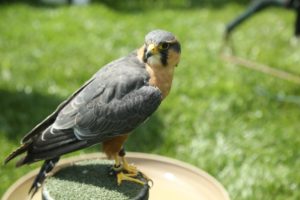
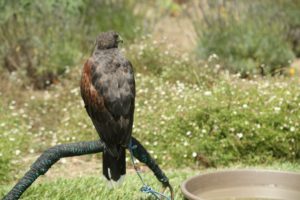
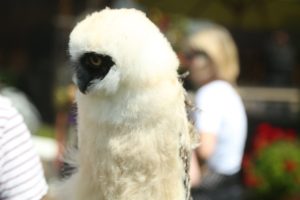
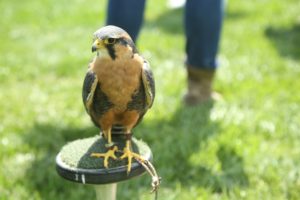
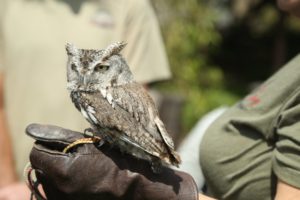
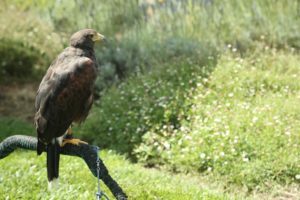
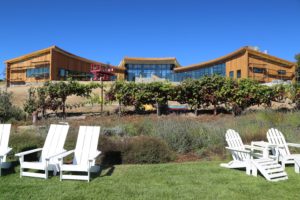
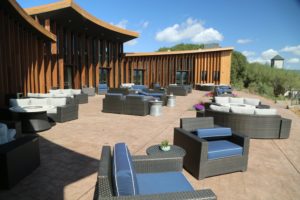
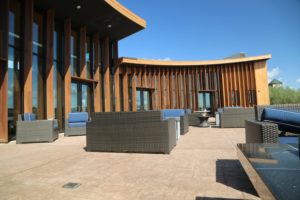
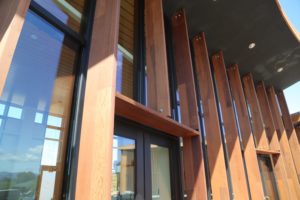
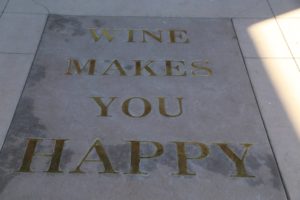
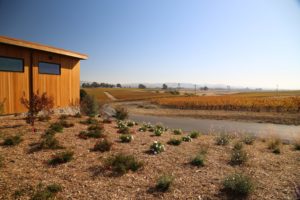
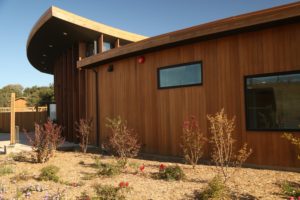
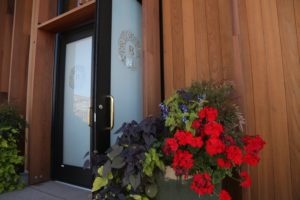
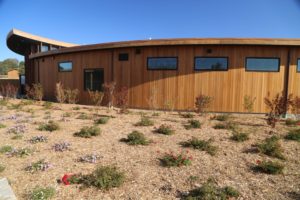
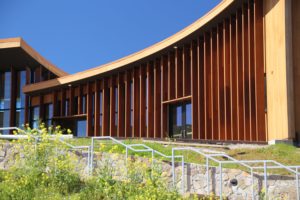
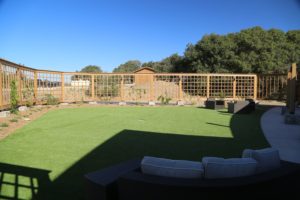
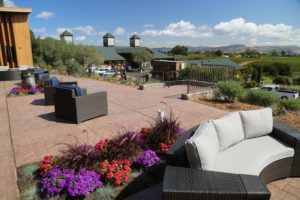

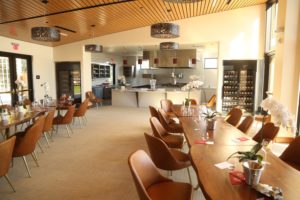
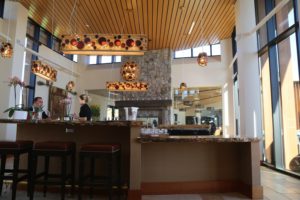
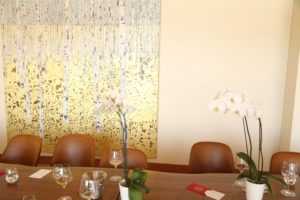
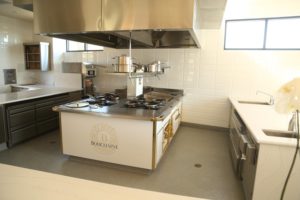
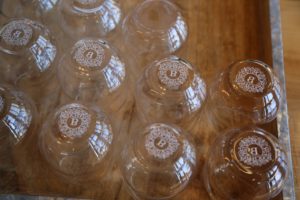
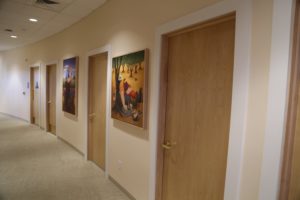
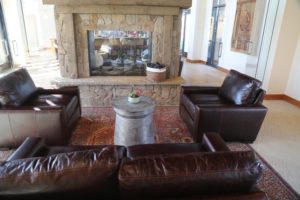
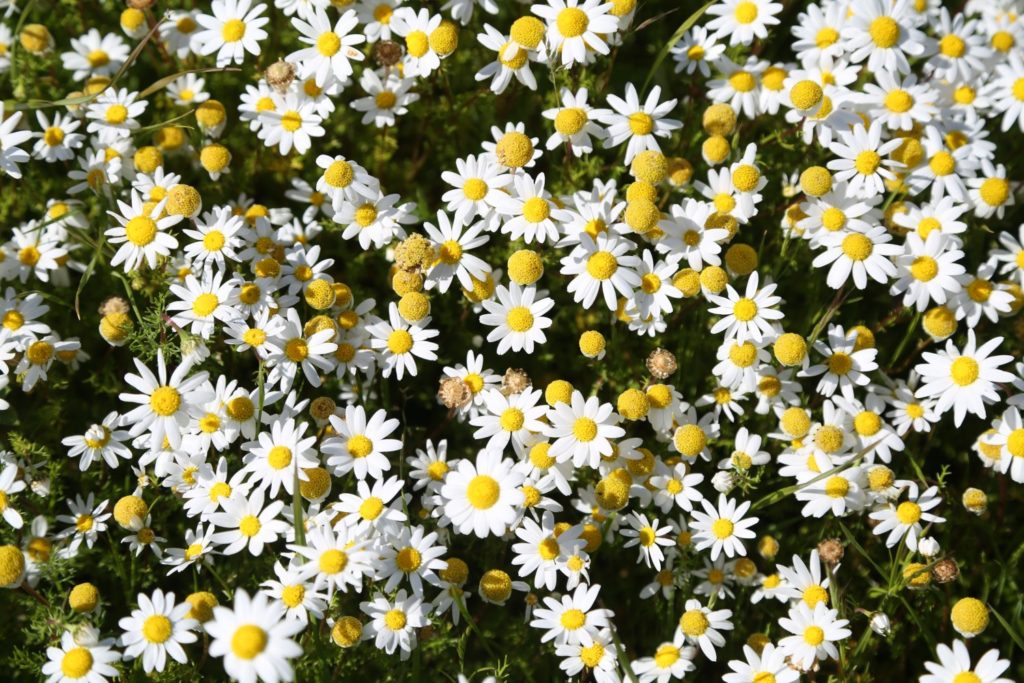
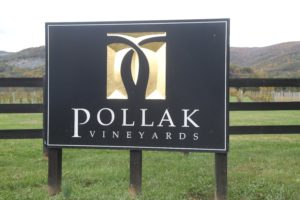
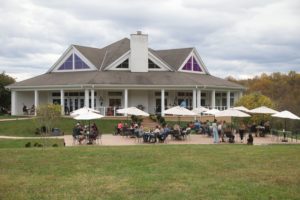
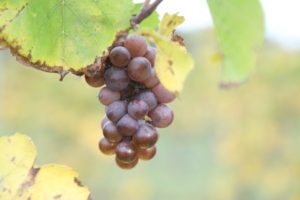
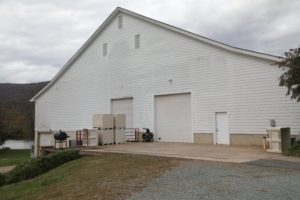
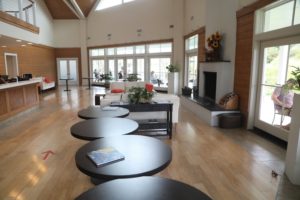
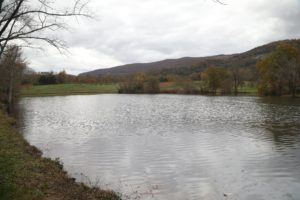
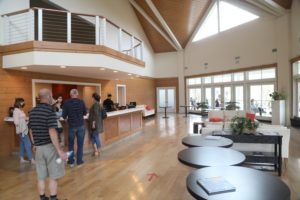
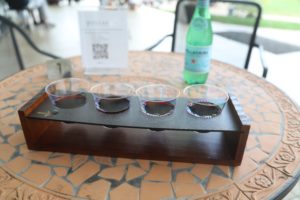
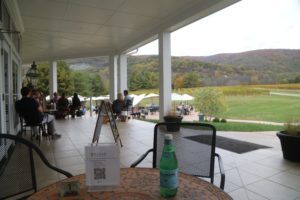
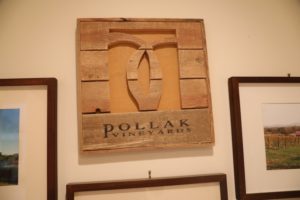
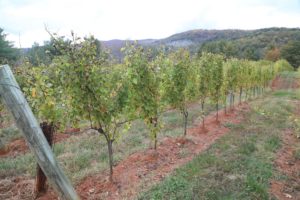
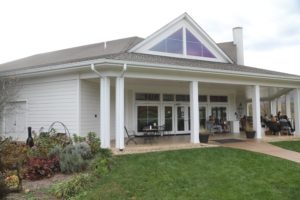
Leave a Reply